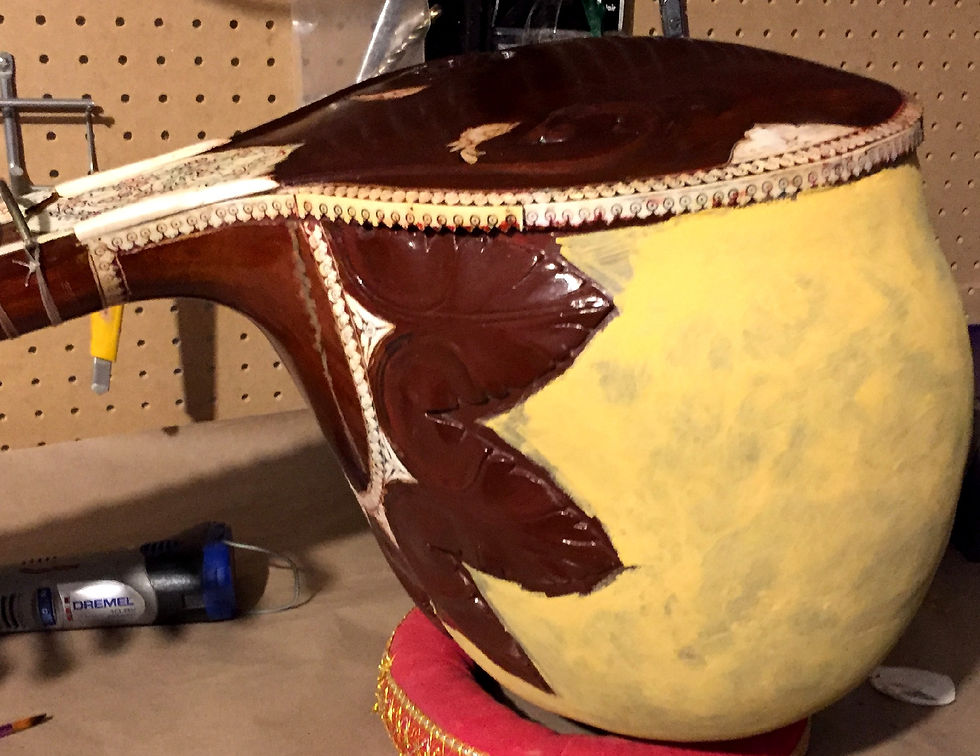1961 Indian Musical Stores Swan Head
- The Registry
- Jan 3, 2019
- 1 min read
This is another instrument that was destined for the trash dumpster. It is from 1961, as confirmed by the shop that originally sold it. The main gourd is enormous, from an era before microphones and P.A. systems were common.

It came to us poor cosmetic shape. Much of the binding was missing. In the photos below, you can seen the auto body filler that was used in past repairs as well as the original bright yellow sizing that was painted on the tumba before its original, final finishing.


Working through to the original tabli finish.

Recreating the original sizing color. An exact match. We took the finish down to bare gourd before application of the sizing.

The refinished tabli.

The refinished tumba.

Taking liberties with colors of the decorative nibs in the headstock.

These open-back peg box vintage instruments are increasingly rare.

The main jawari is ivory. The sympathetic bridge is bone. Bridge height, placement, angle, and jawari will be adjusted after the strings and instrument acclimate to being up to pitch over a period of months.


The proportions of this instrument are from a bye-gone era. The gourd is an up-side-down omega shape. With a proper, three-quarter-closed jawari, this will sound like a modern instrument, but with mid-century resonance and projection.
This sitar is part of the Registry's Permanent Collection and is not for sale.























Commentaires